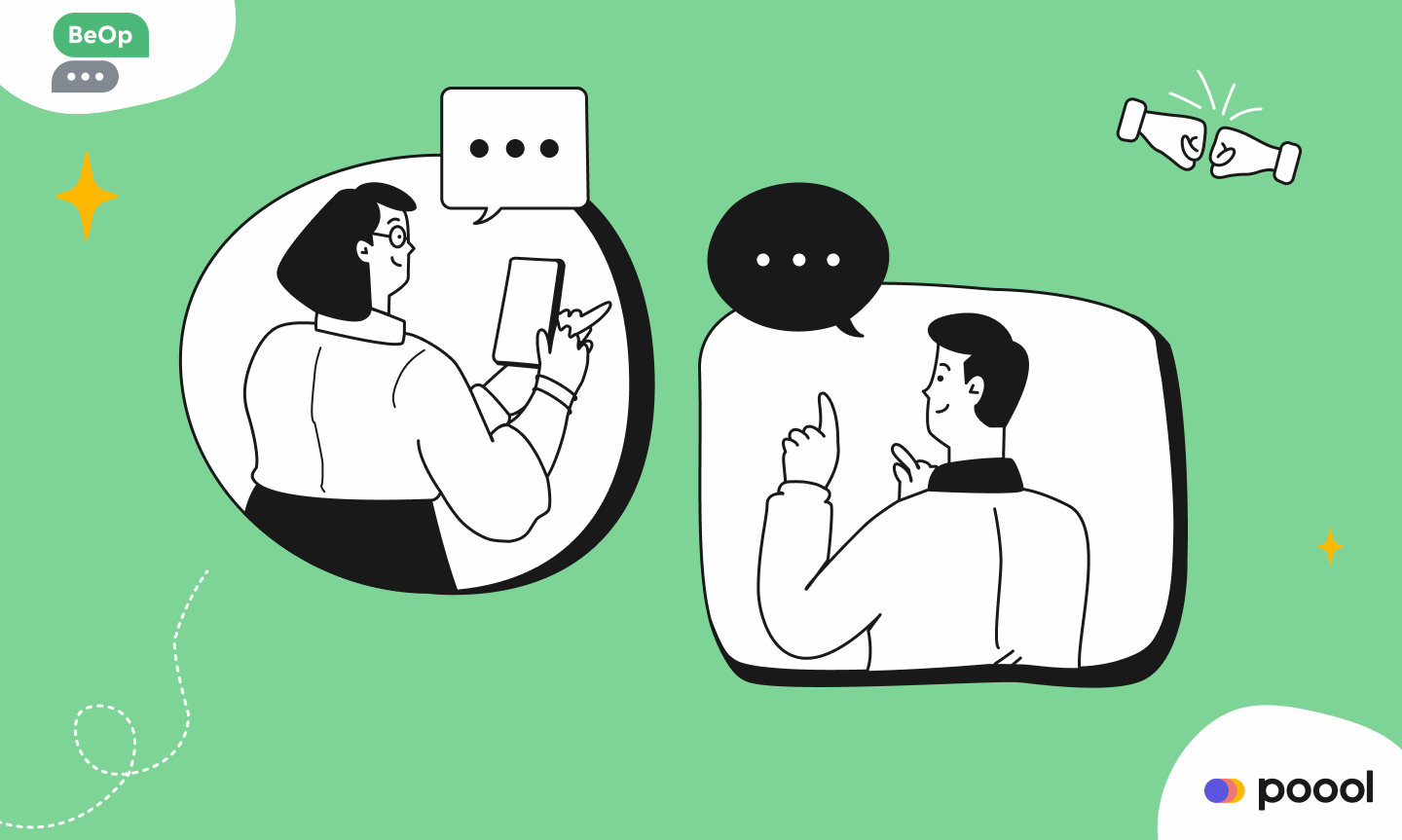Employing a first-party data strategy: The solution to a multitude of challenges.
With Stephane Pere, CRO at Poool, and Don Valdez, Vice President at BeOp.
Agenda:
👉 Who are Poool & BeOp?
👉 What are the challenges?
👉 How does a 1st party data strategy provide the solutions?
👉 The 2 complementary steps to making this strategy a success
- Registration wall: Turn unknown users into account holders for 1st party data collection
- Conversational ecosystem: Use your engagements to enrich your 1st party data
Prefer to watch rather than read? Catch the video replay here.
Who are Poool?
Poool is a digital Audience Conversion Platform, helping content producers take back control of their revenue by turning audiences into leads, members and subscribers.
Our technology allows publishers to establish a variety of value exchanges with their users to successfully employ multiple strategies simultaneously.
The central 3 wall conversion actions are the cookie wall with alternatives, registration wall and paywall.

These 3 monetization strategies, are complimentary, support one another and allow for the development of multiple valuable revenue streams.
Who are BeOp?
BeOp has established a new business model for publishers through conversational formats and based around the 4 Cs:
- Cookieless
- Conversational
- Contextual
- Consentless
Conversation formats help power publishing partners in the default privatization by providing a triple solution for the newsroom, marketing and sales teams:
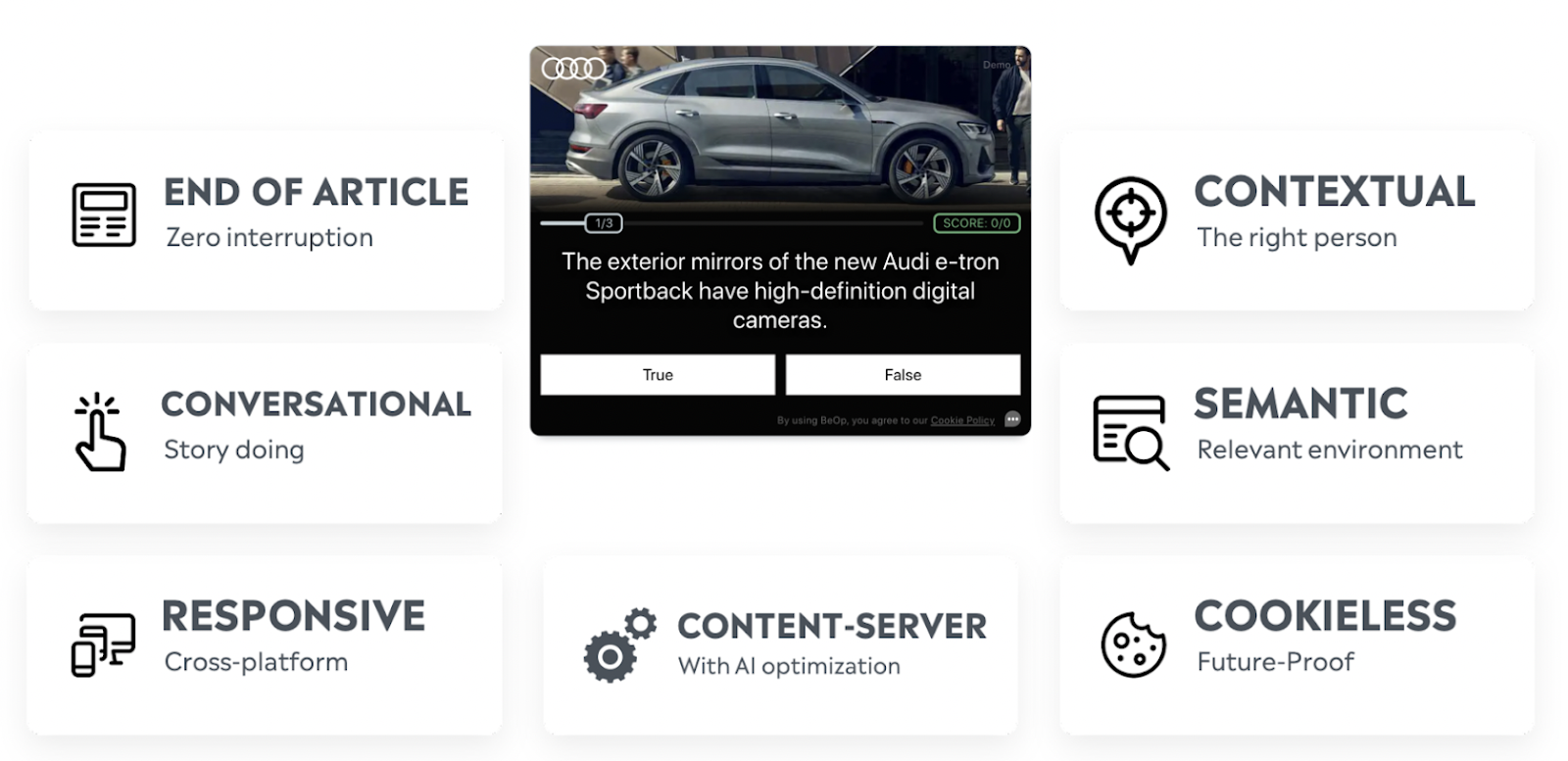
First, BeOp allows editorial teams to further engage with their readers
Second, we enable marketing and data teams to collect opt-in, declarative 1st party data by integrating with DMPs and CRMs
Third, our platform arms the sales team with branding capabilities for their advertising clients
What are the challenges?
Although there's a cornucopia of obstacles for digital publishers today, we’ve identified 4 central challenges that publishers can’t ignore, both around the business model for medias and the way you engage with audiences:
🍪 The depreciation of the 3rd party cookie
We all know the story by now, but Chrome and Apple’s decision to go cookieless is creating a huge hurdle for digital businesses, publishers included. In fact, 41% of marketers believe their biggest challenge will be their inability to attract the right data in this future world without 3rd-party cookies.
💰 Publishers reliance on advertising revenue is no longer stable
Ad-blockers, data and privacy regulations, consumer disenchantment with interrupted quadrilateral monologues… The ad-based business model is forcing publishers to find new techniques to monetizing from advertising or look for alternative revenue streams.
📰 Subscription and membership markets are hyper competitive
Publishers have increasing pressure to establish value exchanges and grow the lifetime value of each individual, however subscription markets are hugely competitive and there’s limitations to the number of subscriptions that each user can afford to sign up to. Not to mention the monopoly of entertainment giants such as Netflix and the leading digital news publishers.
👪 Consumers show loyalty towards high customer experience
Personalization and high level customer service is now an expectation from consumers and essential to establishing long-term relationships.
How does a 1st party data strategy provide the solutions?
These challenges are certainly creating a burning platform for digital publishers. However, a first-party data strategy is an incredibly valuable solution to mitigate the effects of these challenges.
Firstly, Stephane stressed that first-party is two things - it’s profile and it’s attribute, they’re two sides of the same coin - you need to work on both for a successful strategy.
How is a first-party data strategy beneficial?
📧 Support advertising revenue streams
Publishers have been reliant on 3rd party cookies, but with this data source phasing out, it’s important to find new identifiers.
For this reason, email ID collection is essential for publishers to become future-proof, allowing for advanced retargeting and monetization of audiences thanks to an alternative ID to the cookie.
To add to this, users with an account who are no longer anonymous create a higher CPM (cost per thousand impressions), making your ad-based revenue significantly more valuable.
📈 Inform your strategy
Knowing more about your audience is vital for survival in the digital age and, with the ID of your logged in users, you’ll be able to gather business intelligence by building up a profile of your individual members.
Discover the ways they engage and interact with your products, unlocking a 360° view of the consumer.
🤑 Support alternative revenue streams
We often forget but converting users into registered members equally turns them into leads, allowing you to sell other things in the future - not only subscriptions but perhaps products, services, intelligence and events.
The data collected and soft conversion steps that increase engagement provide a mechanism to fill the acquisition process.
One of these other revenue streams could be subscription as data collection and converting unknown audiences into logged in members increases engagement, gradually leading the user down the funnel towards subscription.
From Poool’s research and experience, we’ve found that conversion rates are significantly elevated for users who are signed up to the publisher’s newsletter, and even more so if they hold an account on their site.
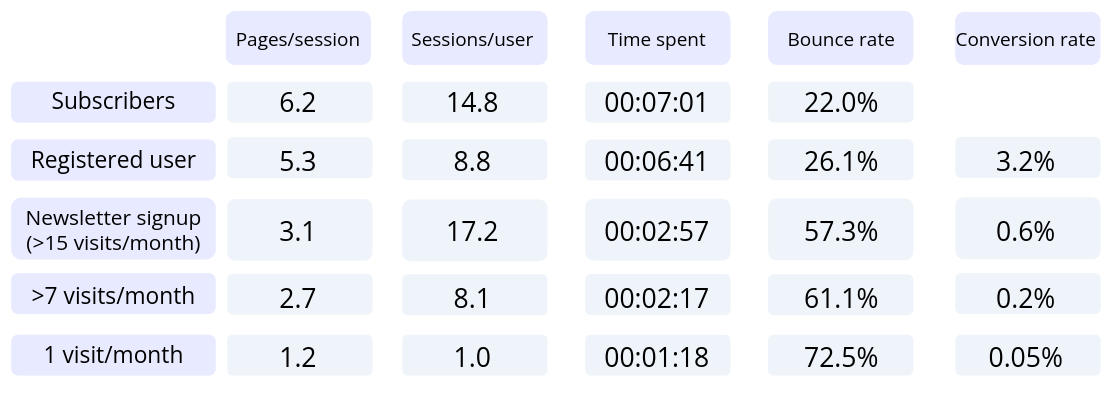
🤸 Allow for personalization
This high quality data collected from your own audience will equally give you the potential to personalize user experiences through segmentation.
Why personalize?
- Improve the user experience
- Increase engagement
- Improve brand perception, loyalty and affinity
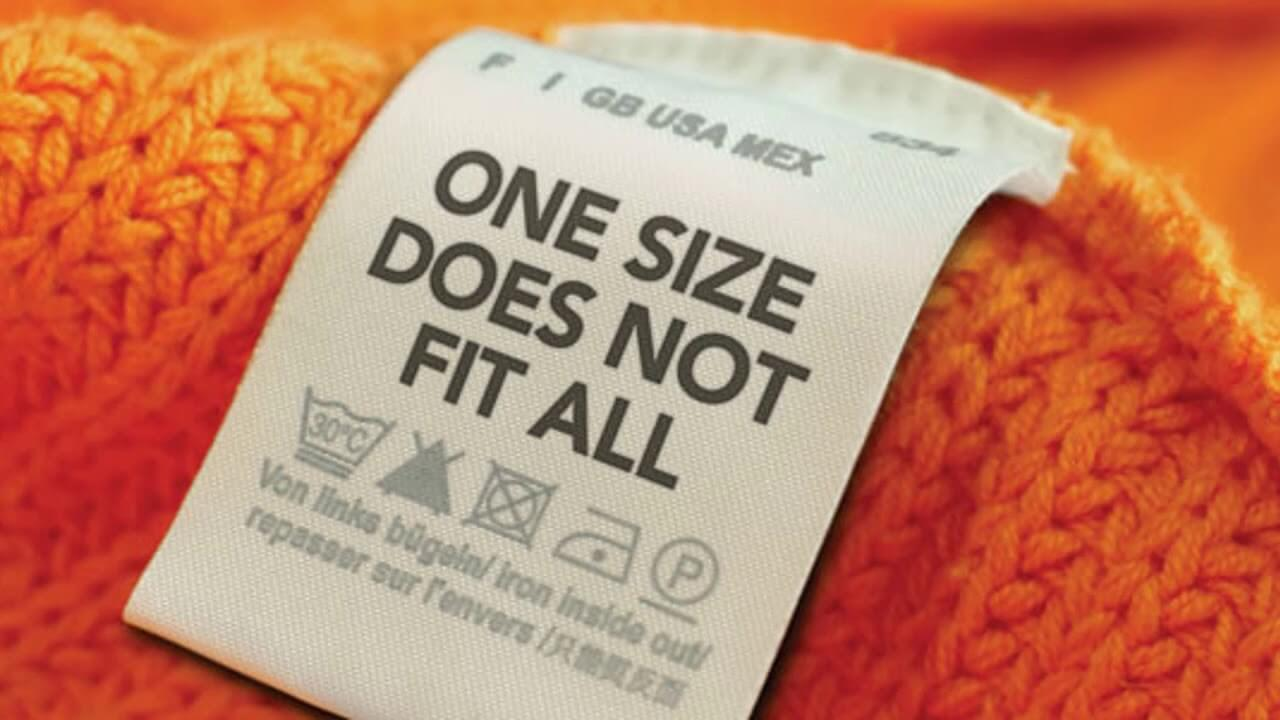
The 2 steps to employing a first-party data strategy
Step 1: Registration wall
🙋 What is a registration wall?
A registration wall blocks content and asks or requires users to create a free account on the publisher’s site in order to gain access. It therefore establishes a value exchange between the media and their audience.
Why employ a wall?
The many distractions and popups on publisher websites have created a form of blindness amongst consumers, making any conversion strategy fairly difficult.
This does, though, make walls an interesting approach for publishers to take as they block users at the point of accessing content - the reason why they’re on your site in the first place.
Typically, you allow them to start reading and engage in your content before blocking the user and asking or requiring a value exchange to continue consumption. Below is an example from The Africa Report, which forefronts the CTA button, highlights that registration is free and that creating an account unlocks benefits for the user.
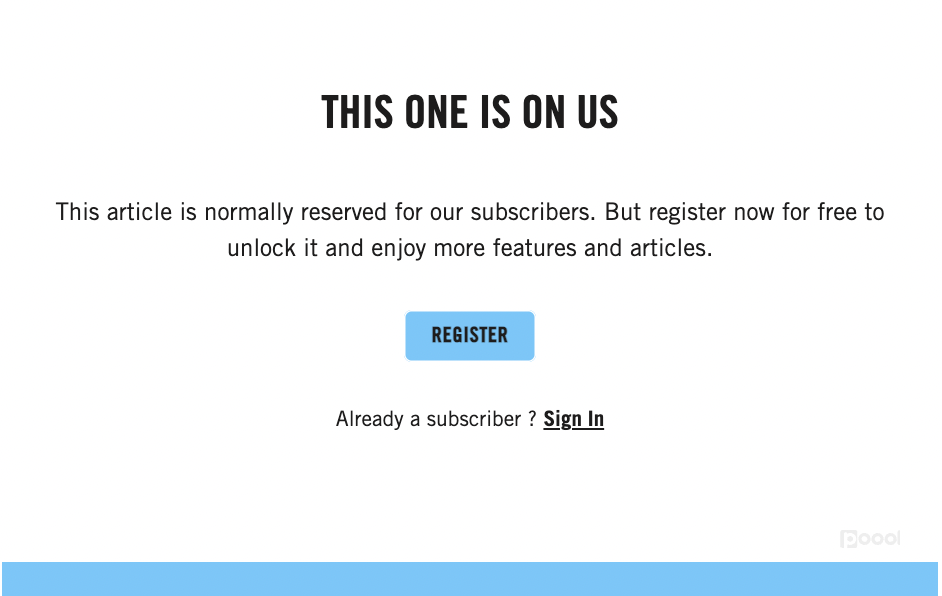
This value exchange is the key - even Think with Google named it as the number one, essential strategy to unlock the power of first-party data.
Create a fair and transparent value exchange:
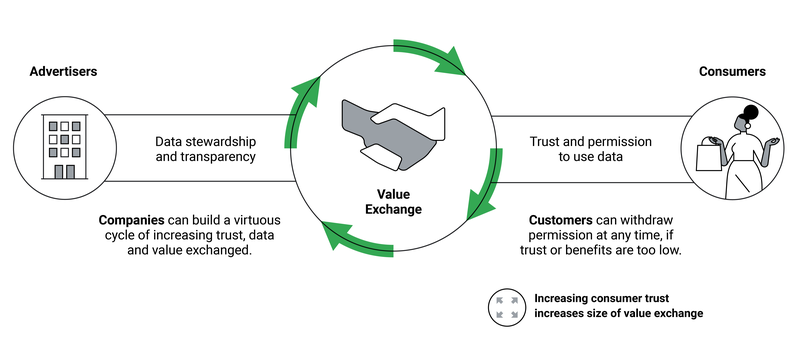
It’s therefore essential that your value exchange involves clear benefits for your user, such as saving content for later, exclusive content, newsletters, becoming a part of a community, etc.
Case study: Boursier.com
Goal - Prepare for the cookieless future, better monetizing inventory, increase CPM, grow their registered user base BUT without negatively impacting any current revenue streams and traffic (always a worry for publishers)
Solution - A metered registration wall with segmented audiences and adapted journeys to present the right conversion strategy to the right audience at the right time with the right type of messages
Achieved with Poool -
- AB testing of journeys and messages
- Grow registered user base
- Increase leads for their intelligence services
- Without negatively impacting advertising revenue

Solution, step 2: conversation ecosystem
BeOp help businesses enhance their first-party data segments through conversational formats, with the only additional integrations needed being with their DMPs, CDPs, and CRMs.
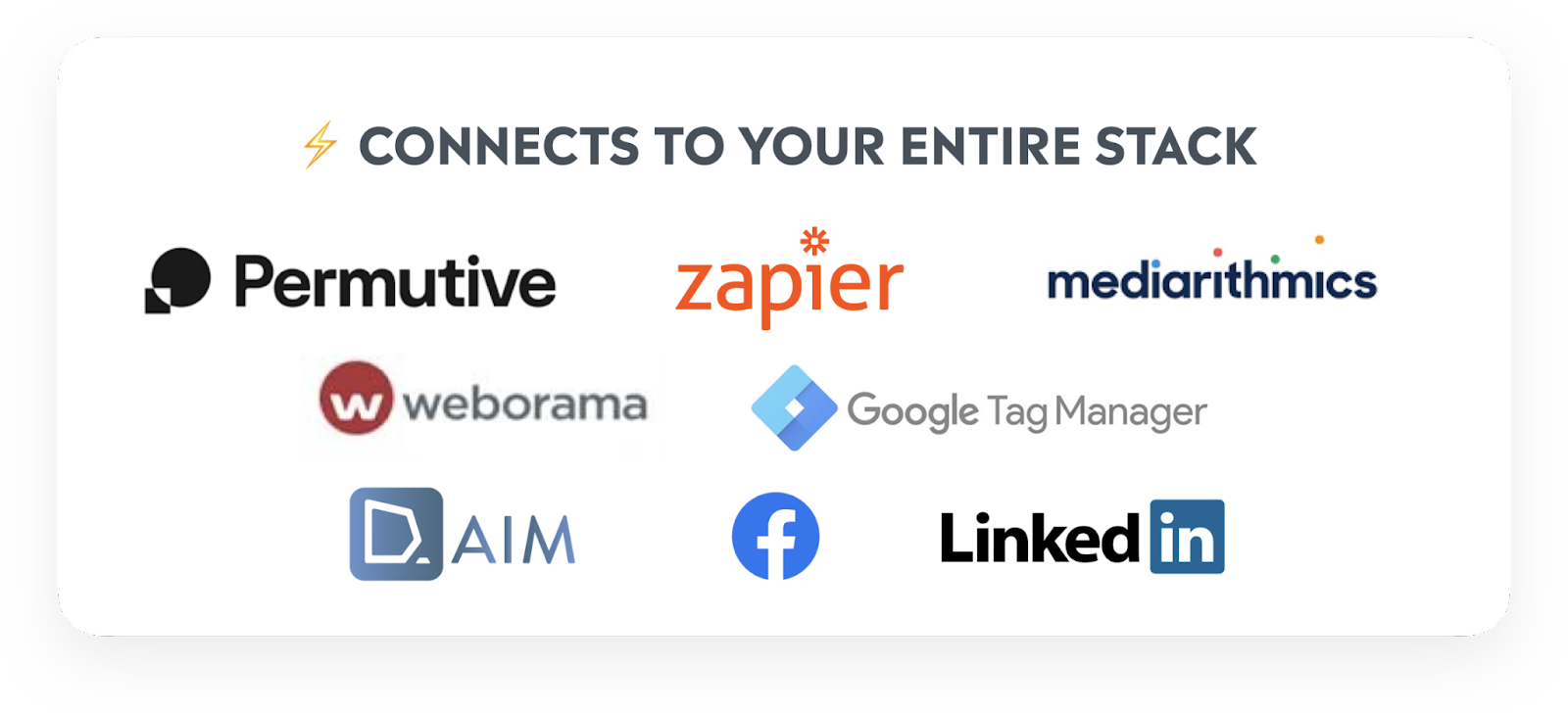
Conversations that publishers have with their users inform what content really resonates with their audience, allows for customization for individuals as well as pre & post sales information to use for strategizing and planning.
Case study 1: Le Figaro, Marketing data enrichment
In summer 2020, BeOp supported the french publisher le Figaro in generating newsletter data and driving subscriptions.
With BeOp form and opt-in, sending data directly to Le Figaro’s CRM, we targeted all articles containing the word “municipal”. In under 5 weeks, BeOp helped them collect over 100,000 emails!
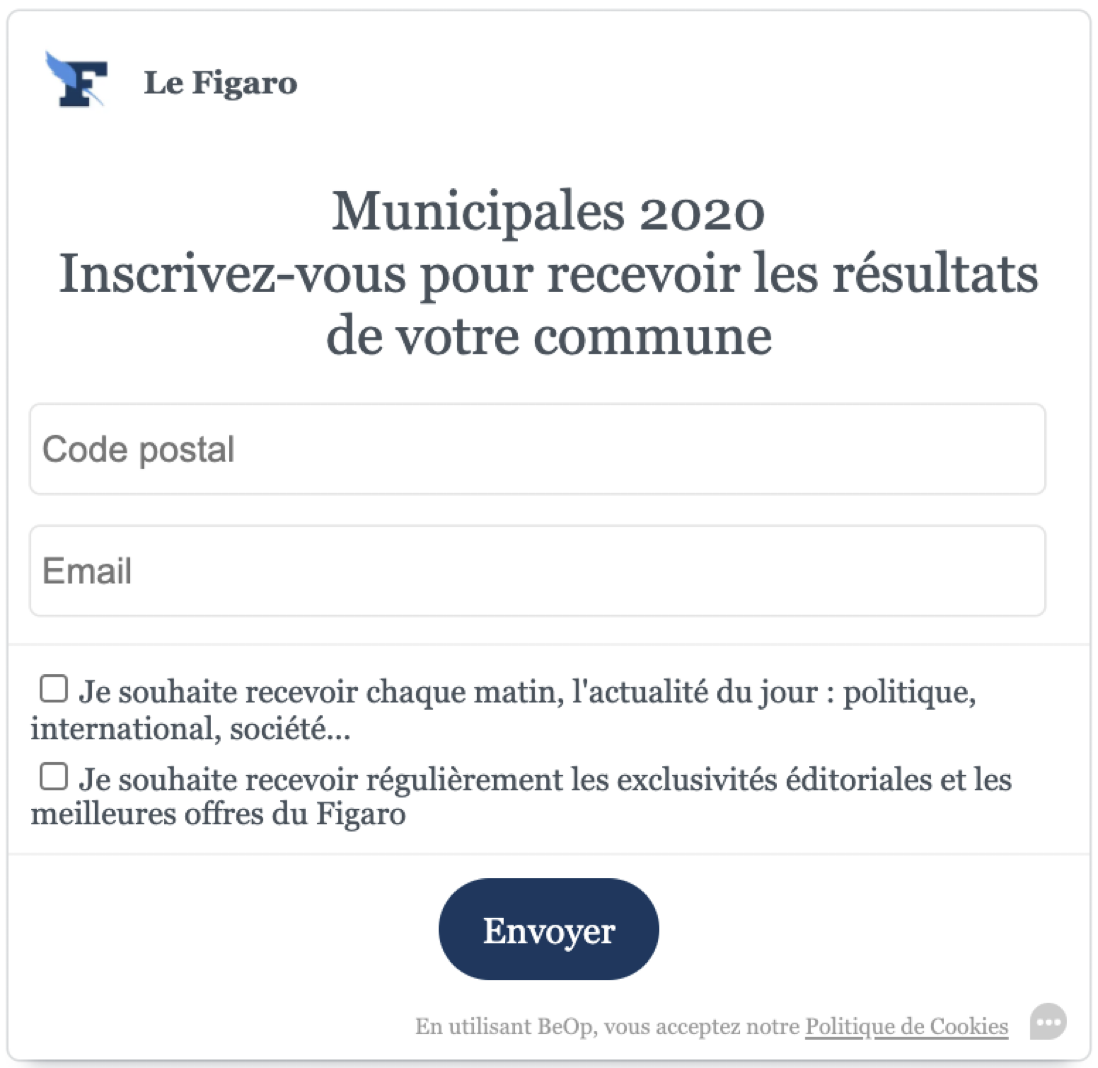
Case study 2: McClatchy, Editorial data enrichment
Covering regional markets, Beop conversational formats were used to highlight topics such as high school sports, favorite burger restaurants and other interests unique to the region.
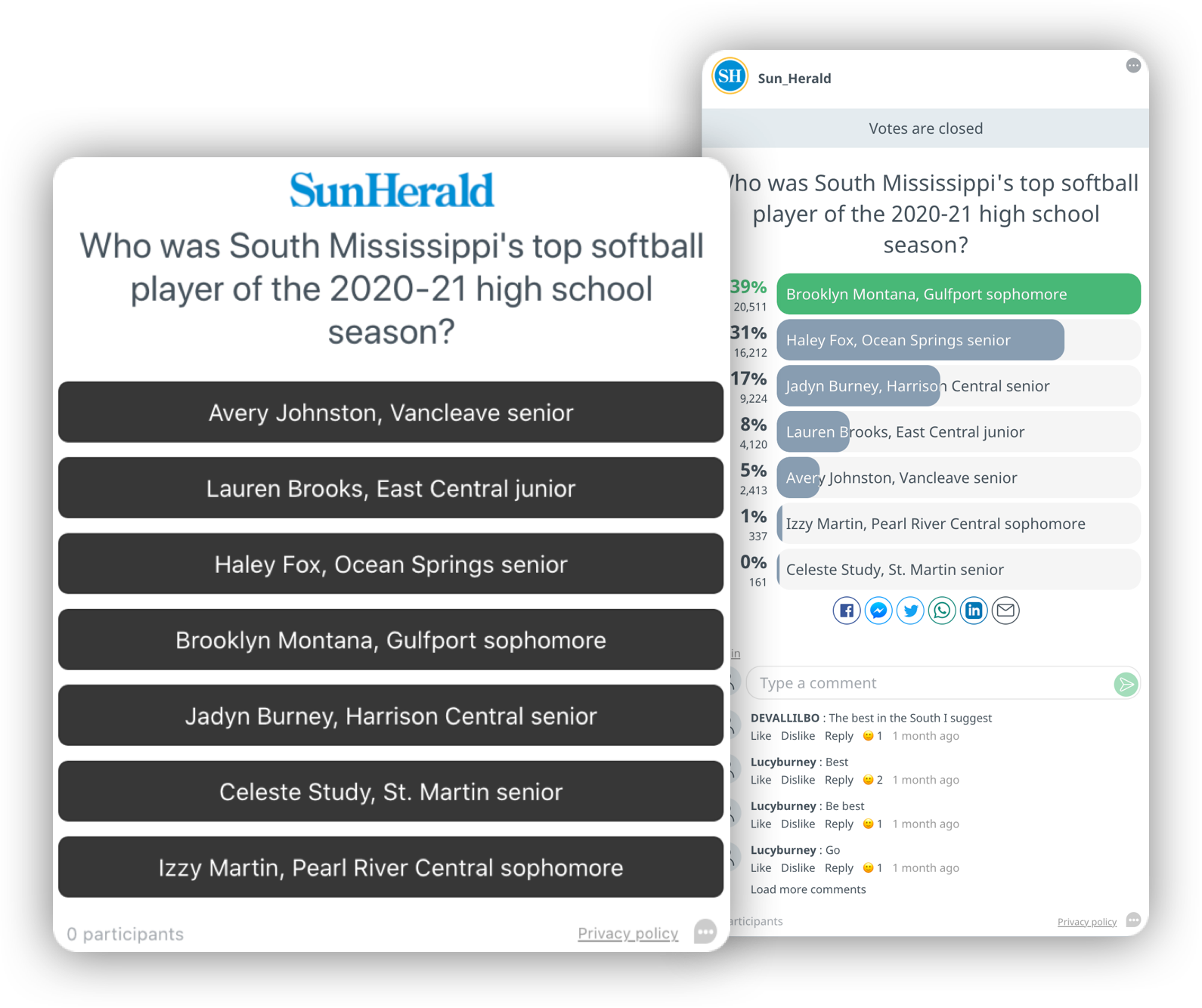
The study found that out of over 217K views, there were 136K interactions, making a 62% interaction rate.
Out of these interactions, there were 131K completes of the conversational formats (either quizzes, surveys, polls, etc) - this means a user got all the way to the end of the conversational experience (60% completion rate from overall views, 96% completion rate from overall interactions).
In addition to the study, 479 emails were collected and over 81 hours spent interacting with BeOp’s conversational formats.
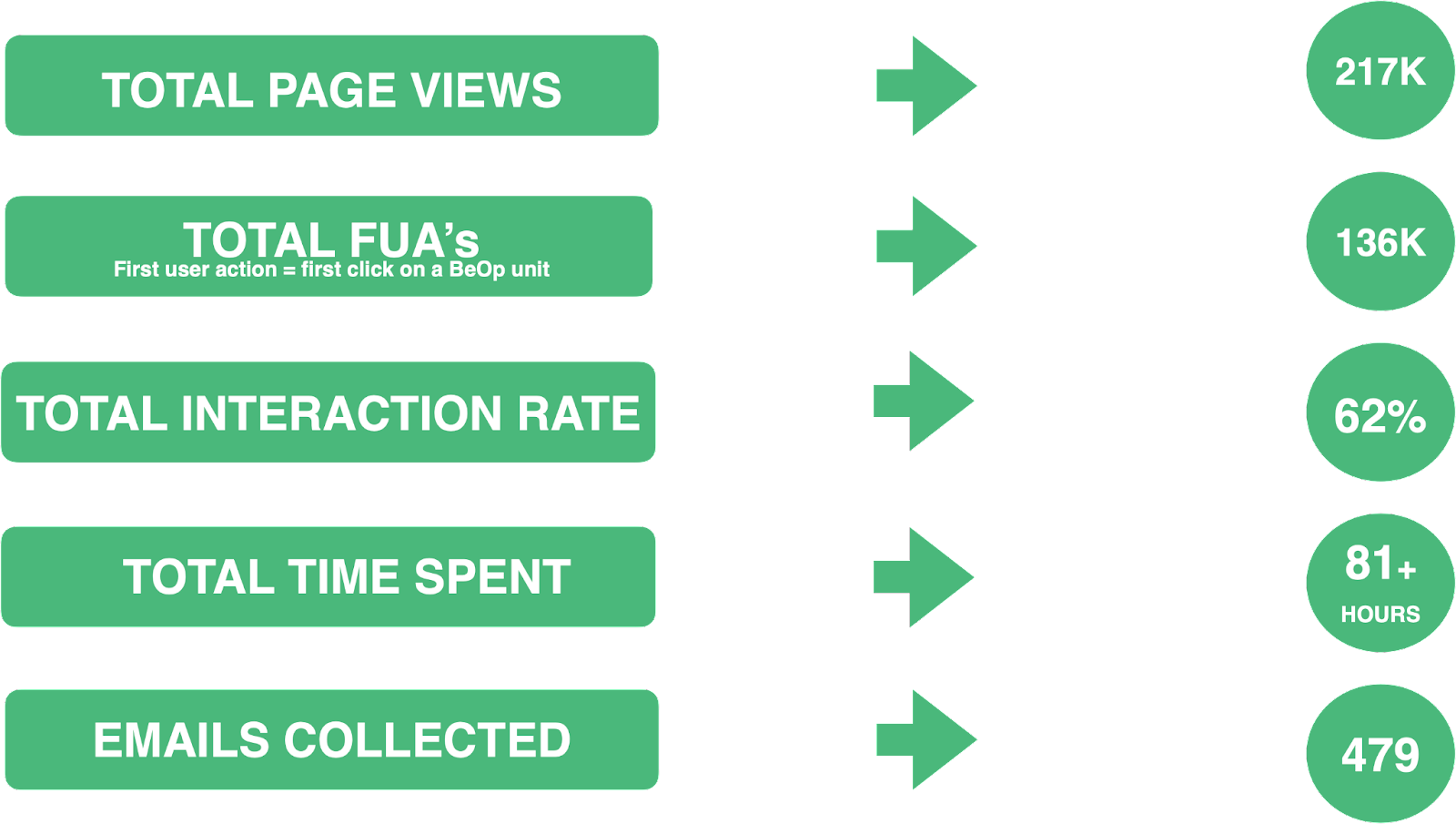
This data could then be used to enhance existing data segments and emails can be pushed to the CRM - i.e. collecting identifiers and then attributes, just as Stephane highlighted as the essential two parts of a 1st party data strategy.
Conversational platforms allow businesses to learn about what topics and formats engage users the most. This means that BeOp clients can establish data partnerships (thanks to their autonomy and ability to collect 1st party data), selling insights and segments to increase monetization in other forms.
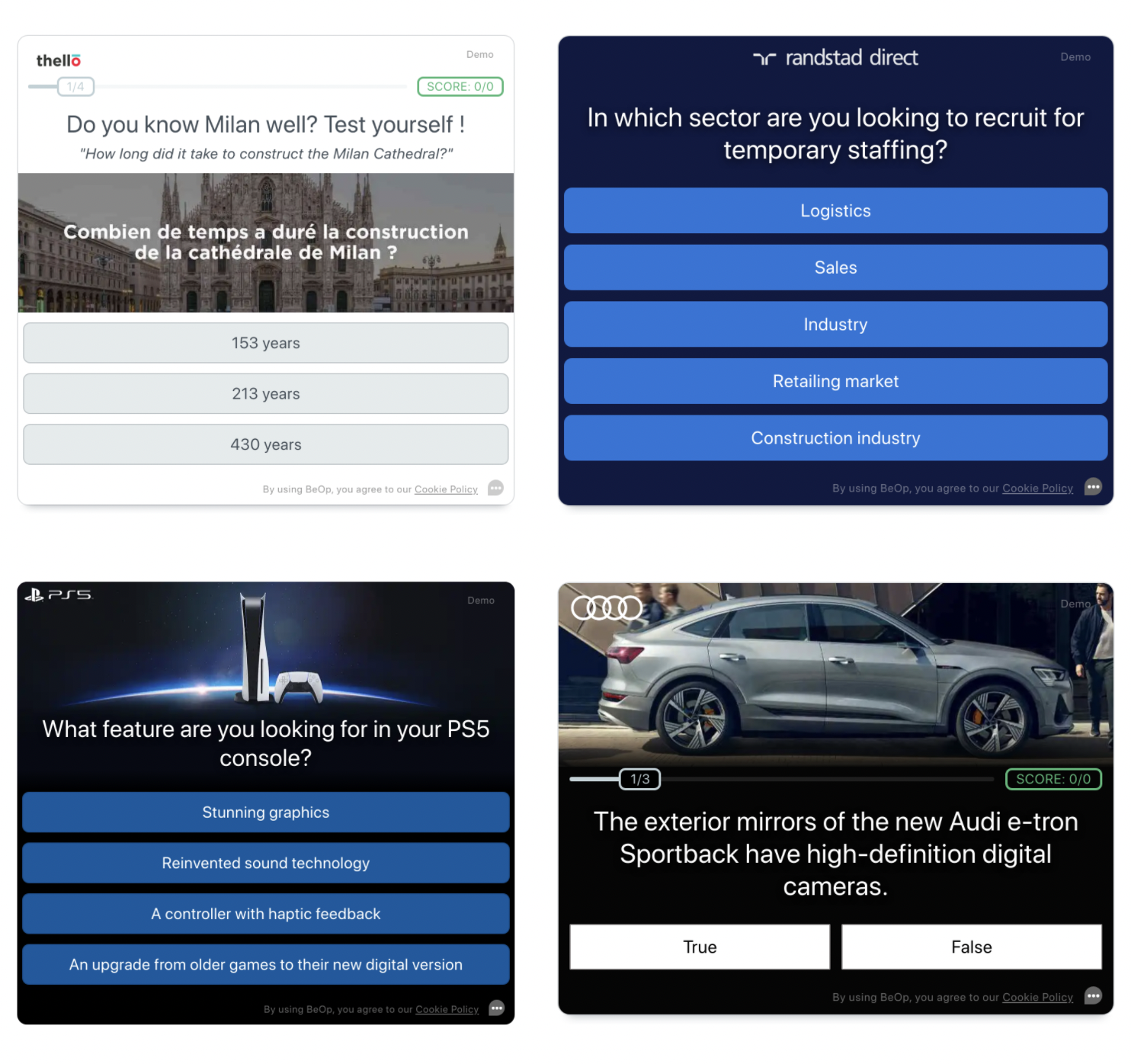
The question now is: are you prepared for the cookieless future?
The speakers:
Stephane Pere: With 15+ years experience in Media (advertising, data, marketing, digital products) , I am an International executive (US, EMEA and APAC) with a passion for News, Digital & Data. Now CRO at Poool, we are empowering publishers to convert digital audiences into leads, members and subscribers.
Don Valdez: At BeOp, we help our publishing and brand partners navigate the cookieless world through our conversational formats that are privacy compliant and increase trust with readers. 10+ years in the ad tech, telecom, and military industries- being a dad is what I'm proudest of.

